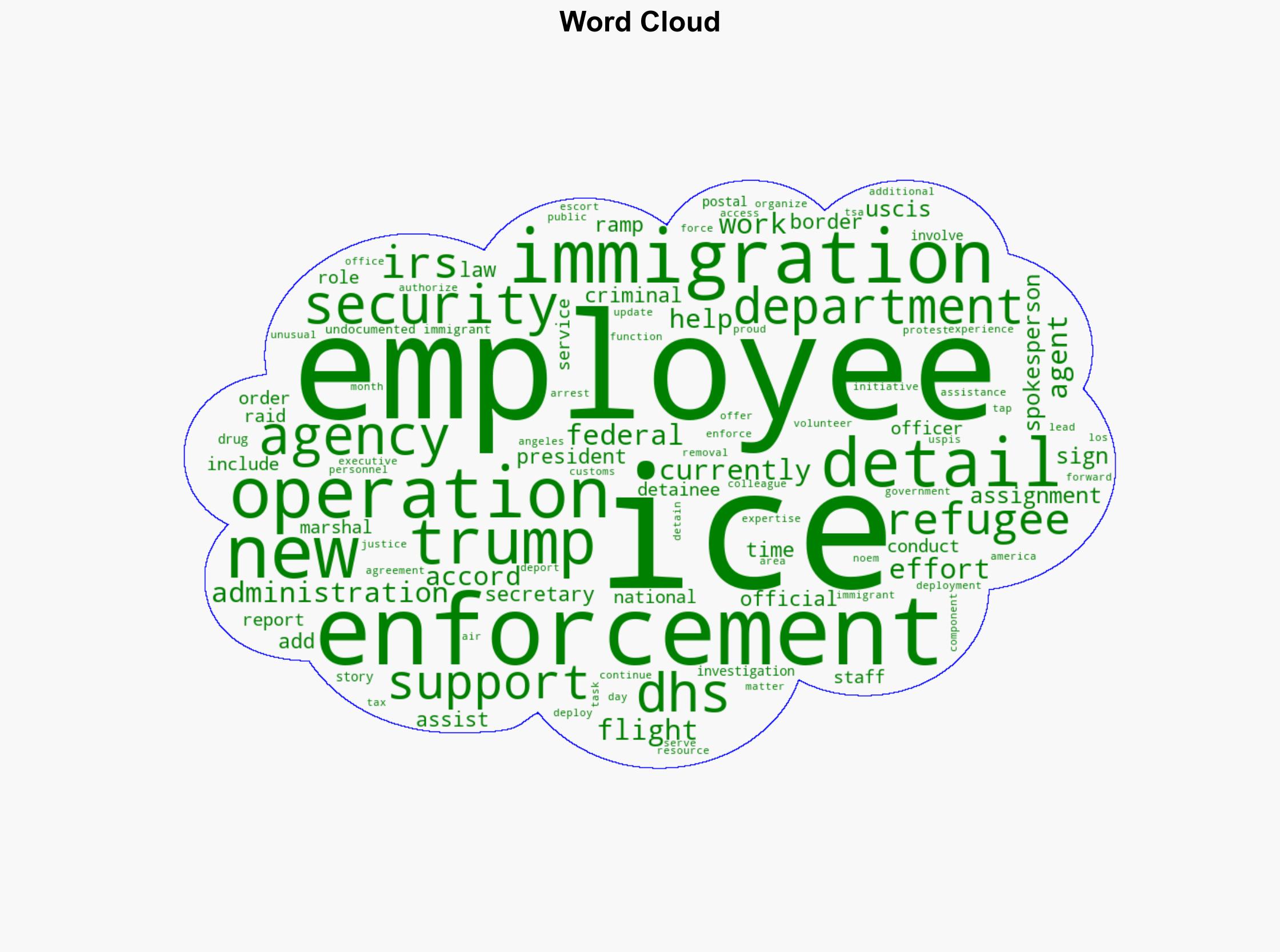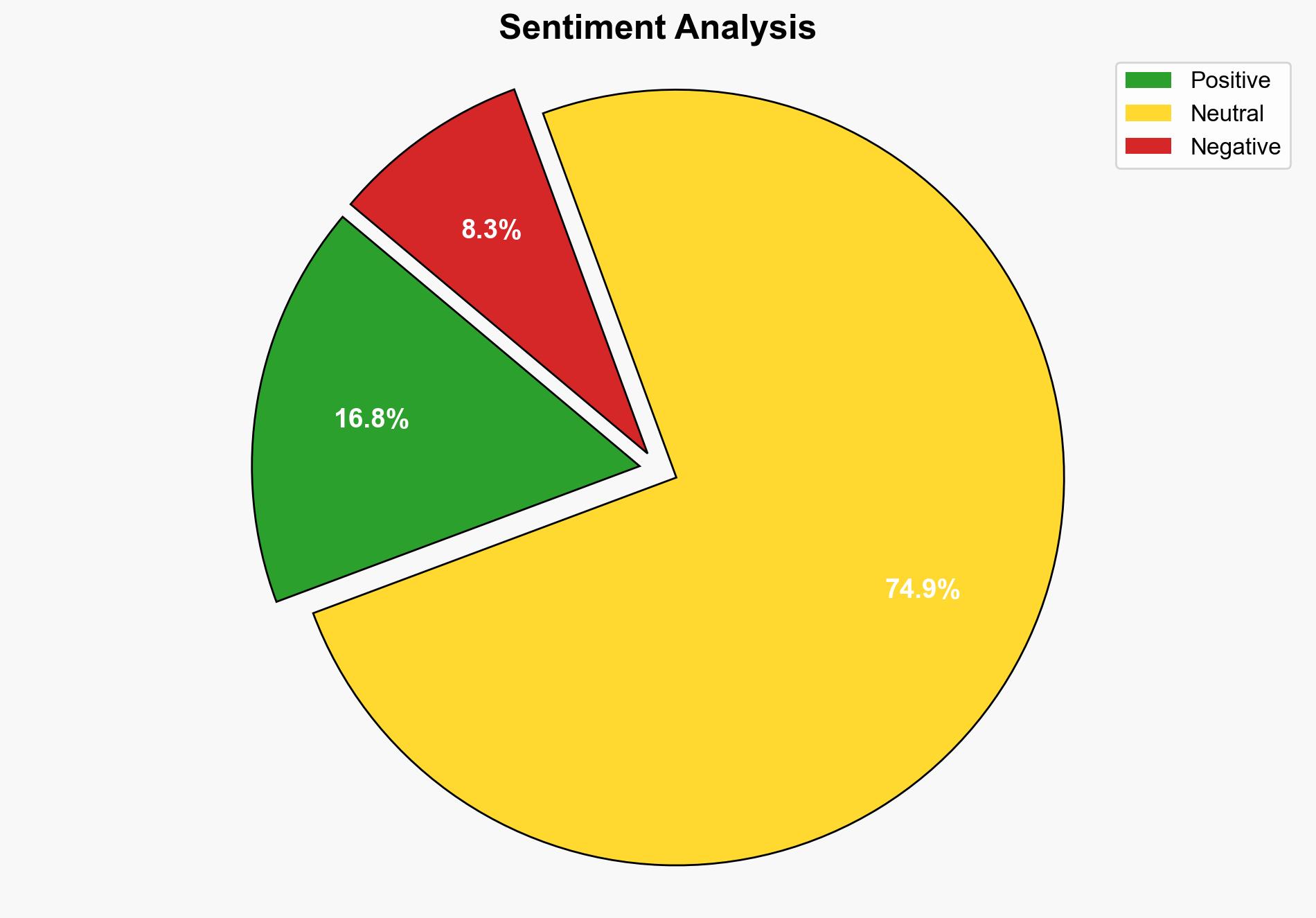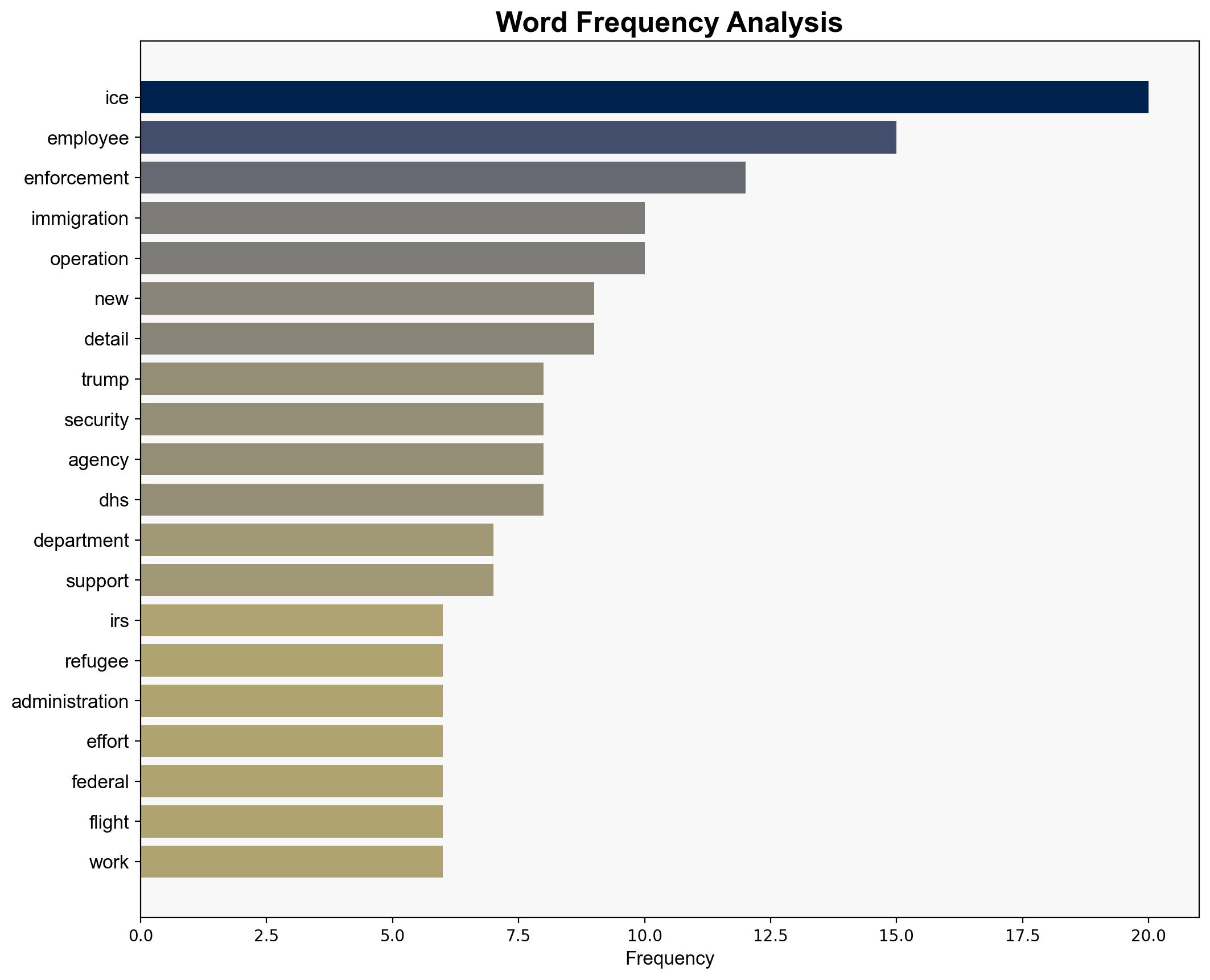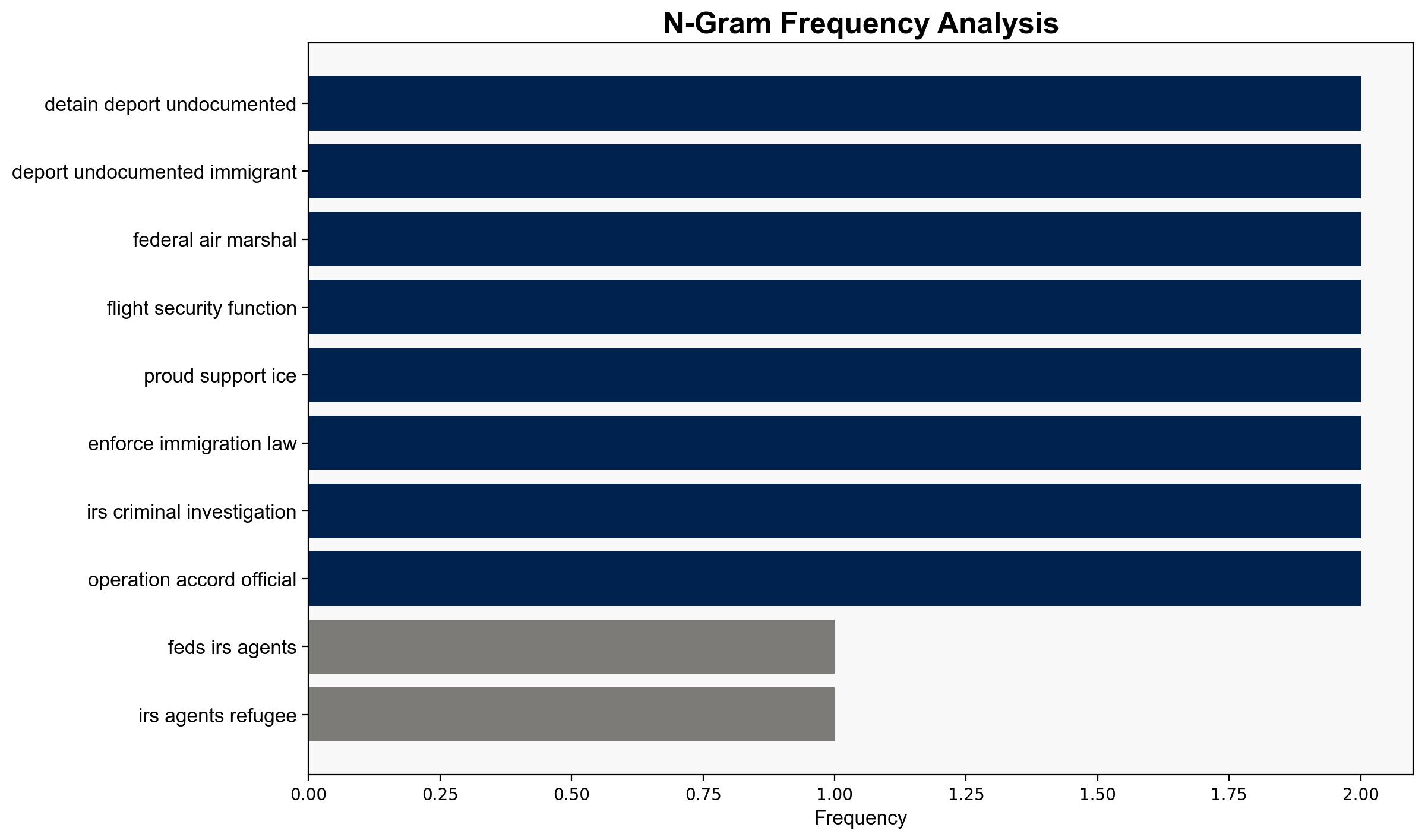IRS Agents Helping ICE – GovExec.com
Published on: 2025-06-16
Intelligence Report: IRS Agents Helping ICE – GovExec.com
1. BLUF (Bottom Line Up Front)
The Trump administration has initiated an unprecedented interagency collaboration, deploying IRS agents to assist ICE in immigration enforcement. This strategic move aims to bolster efforts to detain and deport undocumented immigrants, reflecting an increased reliance on federal employees for immigration enforcement. The initiative may face legal and ethical challenges, potentially affecting public perception and operational effectiveness.
2. Detailed Analysis
The following structured analytic techniques have been applied to ensure methodological consistency:
Cognitive Bias Stress Test
The deployment of IRS agents to assist ICE may be influenced by political motivations rather than operational necessity. Red teaming exercises suggest potential biases in decision-making, emphasizing the need for transparent justification of resource allocation.
Bayesian Scenario Modeling
Probabilistic forecasting indicates a moderate likelihood of increased operational success in immigration enforcement due to enhanced manpower. However, there is also a significant risk of legal challenges and public backlash, which could escalate tensions and hinder long-term policy objectives.
Network Influence Mapping
The collaboration between IRS, ICE, and other DHS components highlights a complex network of interagency relationships. This mapping reveals potential influence dynamics that could impact policy implementation and interdepartmental cooperation.
3. Implications and Strategic Risks
The integration of IRS agents into immigration enforcement efforts presents several risks, including legal challenges related to the scope of IRS authority and potential violations of civil liberties. Additionally, the initiative could strain interagency relationships and public trust, leading to broader systemic vulnerabilities.
4. Recommendations and Outlook
- Conduct a thorough legal review to ensure compliance with existing laws and mitigate potential challenges.
- Enhance transparency and communication with the public to address concerns and build trust.
- Consider scenario-based planning to prepare for potential public protests or legal actions.
- Monitor interagency dynamics to ensure effective collaboration and prevent operational disruptions.
5. Key Individuals and Entities
Kristi Noem, Matthew Tragesser
6. Thematic Tags
national security threats, immigration enforcement, interagency collaboration, legal challenges




